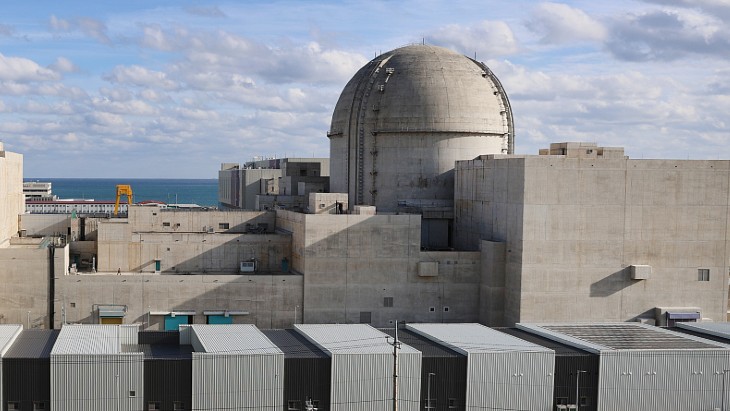Most of the fuel that melted in unit 2 of the damaged Fukushima Daiichi plant in Japan remains within the reactor pressure vessel, an examination using a muon detection system indicates.
Muons are high-energy subatomic particles that are created when cosmic rays enter Earth's upper atmosphere. These particles naturally and harmlessly strike the Earth's surface at a rate of some 10,000 muons per square meter per minute. Muon tracking devices detect and track these particles as they pass through objects. Subtle changes in the trajectory of the muons as they penetrate materials and change in direction correlate with material density. Nuclear materials such as uranium and plutonium are very dense and are therefore relatively easy to identify. The muon detection system uses the so-called permeation method to measure the muon data.
Tokyo Electric Power Company (Tepco) installed the muon detection system at unit 2 in mid-March and began data collection on 22 March. The company released its interim report on its findings on 26 May and published its final report yesterday.
.jpg) |
| An image of unit 2 produced using the muon data (Image: Tepco) |
Tepco said analysis of muon examinations of the fuel debris shows that most of the fuel has melted and dropped from its original position within the core.
Prior to the 2011 accident, some 160 tonnes of fuel rods and about 15 tonnes of control rods were located within the reactor core of unit 2. The upper and lower parts of the reactor vessel contains about 35 tonnes and 80 tonnes of structures, respectively.
The muon examination indicated that most of the debris - some 160 tonnes - had fallen to the bottom of the reactor pressure vessel and resolidified, with only 20-50 tonnes remaining in the reactor core. Tepco said another 70-100 tonnes of debris remains in the upper part of the vessel.
The muon detection device will be removed from unit 2 next month, Tepco said.
The company noted the location of some of the fuel debris "could not be determined conclusively". It therefore plans to conduct an investigation of the lower part of the unit's containment vessel using remote-controlled robots "to determine how the fuel reached the outside of the pressure vessel before it cooled and solidified".
"Determination of the conditions and precise location of the fuel debris is necessary before actually removing it, a central goal of the decontamination and decommissioning process," Tepco said.
A similar investigation using muon detectors carried out last year at unit 1 of the Fukushima Daiichi plant also concluded that most of the fuel had dropped from the core into the bottom of that reactor's vessel.
Researched and written
by World Nuclear News




_72306.jpg)


_49562.jpg)





